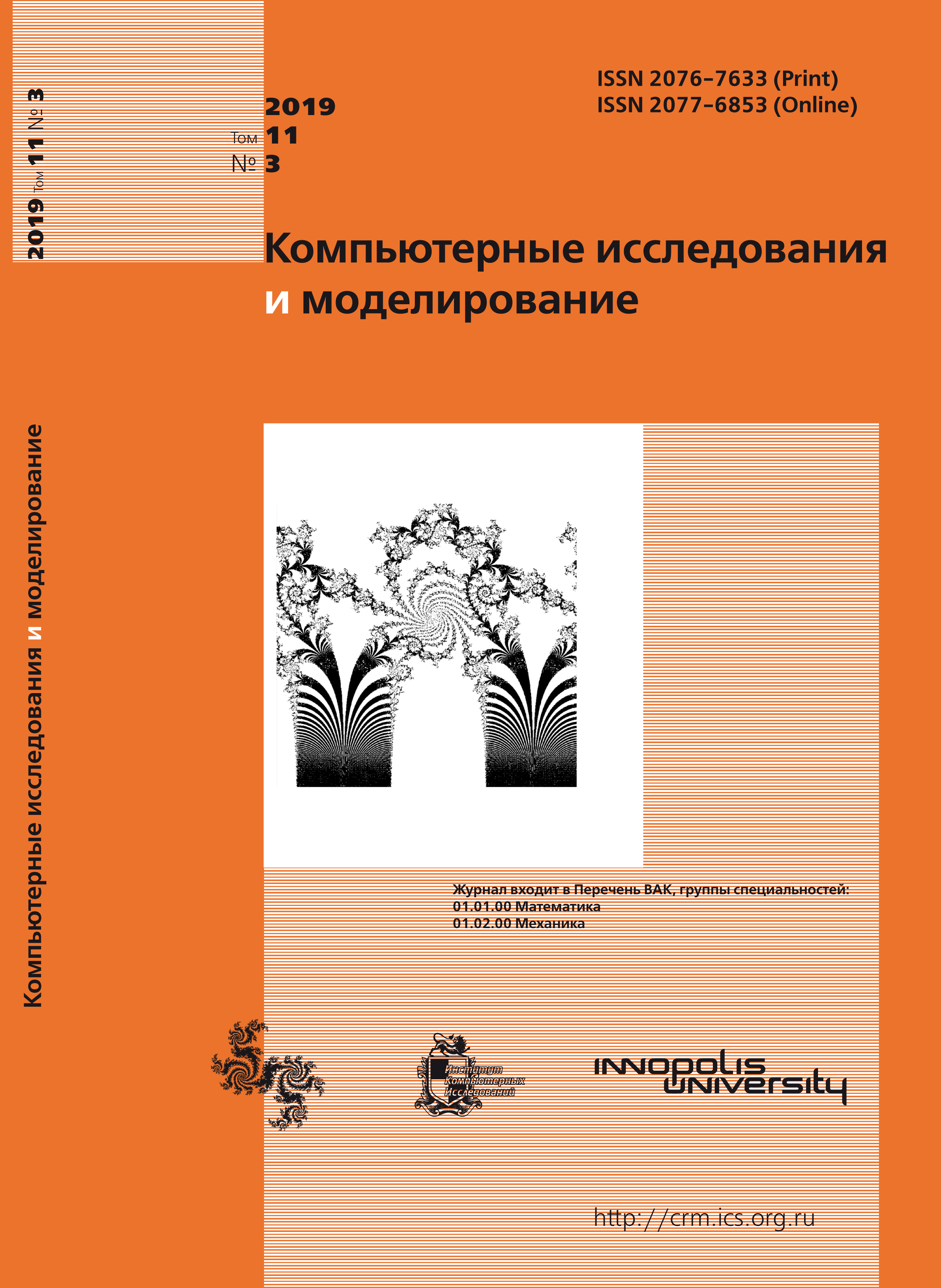All issues
- 2024 Vol. 16
- Issue 1 (special issue)
- 2023 Vol. 15
- 2022 Vol. 14
- 2021 Vol. 13
- 2020 Vol. 12
- 2019 Vol. 11
- 2018 Vol. 10
- 2017 Vol. 9
- 2016 Vol. 8
- 2015 Vol. 7
- 2014 Vol. 6
- 2013 Vol. 5
- 2012 Vol. 4
- 2011 Vol. 3
- 2010 Vol. 2
- 2009 Vol. 1
Neuro-fuzzy model of fuzzy rules formation for objects state evaluation in conditions of uncertainty
List of references:
- . Трехступенчатый эволюционный метод формирования коллективов нейронных сетей для решения задач классификации // Программные продукты и системы. — 2012. — № 4. — С. 101–106.
- . Three-step evolutionary method of forming teams of neural networks for solving classification problems // Software products and systems. — 2012. — no. 4. — P. 101–106. — in Russian.
- , . Коэволюционный метод обучения алгоритмических композиций // Таврический вестник информатики и математики. — 2005. — № 2. — С. 51–66.
- , . Coevolutionary method of teaching algorithmic compositions // Tavrichesky herald of computer science and mathematics. — 2005. — no. 2. — P. 51–66. — in Russian.
- . Метод формирования нечеткого классификатора самонастраивающимися коэволюционными алгоритмами // Искусственный интеллект и принятие решений. — 2010. — № 3. — С. 98–106.
- . The method of forming a fuzzy classifier by self-tuning coevolutionary algorithms // Artificial Intelligence and Decision Making. — 2010. — no. 3. — P. 98–106. — in Russian.
- . Идентификация нелинейных зависимостей с помощью нечеткого логического вывода в системе MATLAB // Математика в приложениях. — 2003. — № 2(2). — С. 9–15.
- . Identification of nonlinear relationships using fuzzy inference system in MATLAB // Mathematics in Applications. — 2003. — no. 2(2). — P. 9–15. — in Russian.
- , . Neural network model of human intoxication functional state determining in some problems of transport safety solution // Computer Research and Modeling. — 2018. — V. 10, no. 3. — P. 285–293. — DOI: 10.20537/2076-7633-2018-10-3-285-293.
- , . UCI Machine Learning Repository. — Irvine, CA: University of California, School of Information and Computer Science, 2013. — http://archive.ics.uci.edu/ml.
- , , , . Exponential synchronization of a class of neural networks with sampled-data control // Applied Mathematics and Computation. — 2017. — no. 315. — P. 150–161. — MathSciNet: MR3693461.
- , , . Approach to the search for similar software projects based on the UML ontology // Advances in Intelligent Systems and Computing. — 2018. — no. 680. — P. 3–10. — DOI: 10.1007/978-3-319-68324-9_1.
- , , , . Neural network method of dynamic biometrics for detecting the substitution of computer // Journal of Advanced Research in Dynamical and Control Systems. — 2018. — no. 10. — P. 1723–1728. — 10 Special Issue.
- , . ANFIS: Adaptive-Network-based Fuzzy Inference Systems // IEEE Tranc. on Systems, Man and Cybernetics. — 1993. — V. 23. — P. 665–685. — DOI: 10.1109/21.256541.
- , . Expert diagnostic system of water pipes gusts in reservoir pressure maintenance processes / 2nd International Conference on Industrial Engineering, Applications and Manufacturing, ICIEAM. — Proceedings. — 2016. — 7911651.
- , , . Neuro-fuzzy model of complex objects approximation with discrete output / 2nd International Conference on Industrial Engineering, Applications and Manufacturing, ICIEAM. — Proceedings. — 2016. — 7911653.
- , , , . Adaptive fuzzy funnel control for a class of strict feedback nonlinear systems // Neurocomputing. — 2017. — no. 241. — P. 71–80. — DOI: 10.1016/j.neucom.2017.02.030.
- , , . An ontology-based model of technical documentation fuzzy structuring // CEUR Workshop Proceedings. — 2016. — no. 1687. — P. 63–74.
- . Expert deduction rules in data mining with association rules: a case study // Knowledge and Information Systems. — 2019. — no. 59(1). — P. 167–195. — DOI: 10.1007/s10115-018-1206-x.
- , . Mathematical Modeling of Observed Natural Behavior: a Fuzzy Logic Approach // Fuzzy Sets and Systems. — 2004. — V. 146. — P. 437–450. — DOI: 10.1016/j.fss.2003.09.005. — MathSciNet: MR2082237.
- , , , . Fuzzy Soft Expert System in Prediction of Coronary Artery Disease // International Journal of Fuzzy Systems. — 2017. — no. 19(5). — P. 1546–1559. — DOI: 10.1007/s40815-016-0255-0.
- . The boosting approach to machine learning: An overview / MSRI Workshop on Nonlinear Estimation and Classification. — 2001. — 23 p. — Berkeley, CA. — MathSciNet: MR2005788.
- , . Michigan and Pittsburgh Methods Combining for Fuzzy Classifier Generating with Coevolutionary Algorithm for Strategy Adaptation / Proc. of 2011 IEEE Congress on Evolutionary Computation. — 2011. — New Orleans, LA, USA.
- . Bootstrap methods for multivariate hypothesis testing // Communications in Statistics: Simulation and Computation. — 2017. — no. 46(10). — P. 7654–7667. — DOI: 10.1080/03610918.2016.1248573. — MathSciNet: MR3764993.
- , , . An adaptive fuzzy logic system for the compensation of nonlinear distortion in wireless power amplifiers // Neural Computing and Applications. — 2018. — no. 30(8). — P. 2539–2554. — DOI: 10.1007/s00521-017-2849-3.
- , . Identification of dynamic diagnostic models with the use of methodology of knowledge discovery in databases // Engineering Applications of Artificial Intelligence. — 2007. — no. 20(5). — P. 699–707. — DOI: 10.1016/j.engappai.2006.11.002. — MathSciNet: MR2711352.
- . Soft computing and complex system analysis // International Journal of General Systems. — 2001. — no. 30(1). — P. 71–88. — DOI: 10.1080/03081070108960699.
- . Fuzzy Sets // Information and Control. — 1965. — V. 8. — P. 338–353.
Indexed in Scopus
Full-text version of the journal is also available on the web site of the scientific electronic library eLIBRARY.RU
The journal is included in the Russian Science Citation Index
The journal is included in the RSCI
International Interdisciplinary Conference "Mathematics. Computing. Education"
Copyright © 2009–2024 Institute of Computer Science






